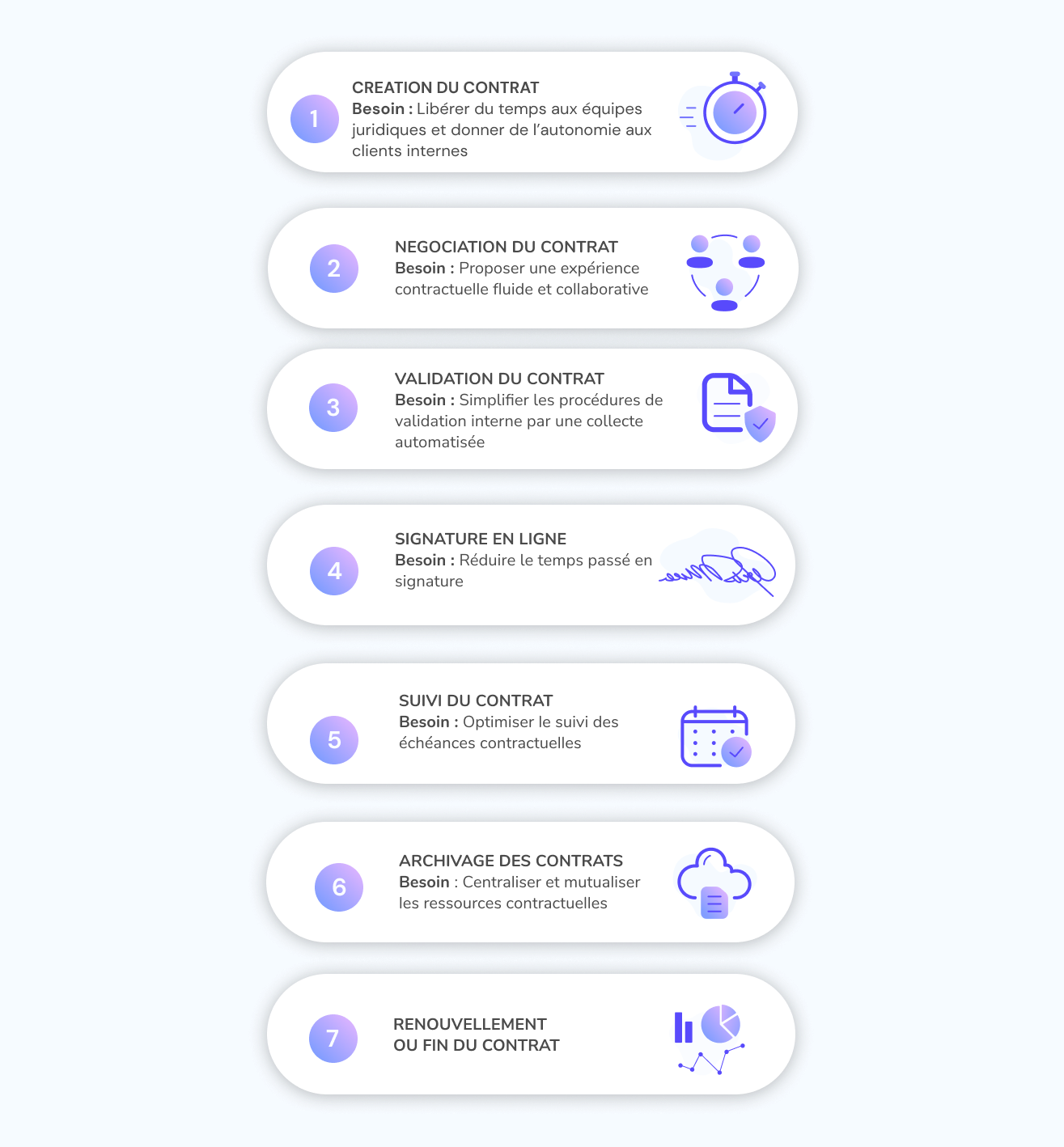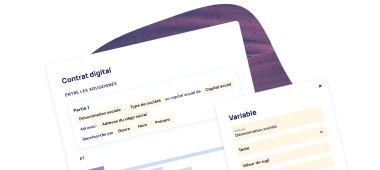Contract Lifecycle Management
Do you have a question about the life cycle of contracts? You will find all the answers to your questions in this space.

Definition : Contract Management
The Contract Management , or Contract Lifecycle Management (CLM) is the the management of the life cycle of contracts within a company. This cycle extends from the creation of the contract to its execution.
Efficient and effective contract lifecycle managementincludes the use of a Contract Management Software , Contract Management Software , which allows gains in terms of productivity, security, visibility and performance. These solutions differ from electronic document management software, DMSThese solutions are different from electronic document management software, as they have been specifically designed for contract management.
The stages of Contract Lifecycle
Management (CLM)
The contract life cycleis made up of several stages that represent the chronology of the progress of a contract. Some of these stages are more strategic and complex than others and require more attention.
The 6 stages of contract life cycle management are
1 / Creation of the contract
Several actors within the company may need to create contracts.
- The Legal Department for the benefit of its internal clients. The lawyers are the guarantors of the legal validity of contracts. Their challenge is to ensure that operational staff (buyers, sales staff, HR, etc.) use the most up-to-date contract models.
- The Purchasing Department to contract with suppliers.
- The Sales Department to contract with customers.
- The Marketing Department to contract with partners or service providers.
- The Human Resources Department for employment contracts, collective bargaining or any act or procedure related to Labour Law.
- etc.
Negotiation consists of sending the draft contract to the contracting party in order to collect its requests for modifications or adaptations.
This phase is usually done by e-mail in which the actors attach the contract in Word with apparent changes in the document (track changes) and comments.
The final objective is for the parties to agree on a clean version of the contract at the end of the negotiation.
3 / Validation of the contract
Before the contract is signed, some companies may want to set up a contract validation circuit negotiated.
Lawyers, when not involved in the creation and negotiation phase, must be able to review and validate contracts negotiated by buyers or sales staff, for example.
But this is not a general rule, each company has different practices.
Once finalised and approved by the parties, the contract is sent for signature.
This signature can be done by hand or in a dematerialized way thanks to the electronic signature. The signatories are defined according to criteria specific to each company: role within the company, type of contract, amount of the contract to be signed, etc.
This phase consists of monitoring all the key data of the contract during its execution.
The challenge here is to enable the company's stakeholders to easily track strategic information and to anticipate important events such as the end of the contract, the end of a notice period, the tacit renewal of the contract, etc. deadlines important events such as the end of the contract, the end of a notice period, the tacit renewal of the contract, etc.
Key data are not necessarily dates. It can also be, for example, a specific clause in the contract that must be followed because a change in the law could make it illegal.
6 / Archiving the contract
This phase consists of archiving all the contracts signed within a contract library. The aim here is to centralise all contractual resources in one place, so that they can be easily retrieved if necessary.
And for good reason: 70% of companies are unable to find at least 10% of their contracts. In the absence of dematerialisation of the process, or automation of the archiving :
- contracts signed in paper format are easily lost if there is no archiving, shelving
- contracts signed in electronic format are often recorded locally and not centralised in the company's document database
Most common Contract Management needs
Many companies are thinking about the efficiency of their contractual process. And for good reason, Contract Management is a strategic process for any company, whatever its size, sector or turnover, as the contract is the vehicle for your business.
In this constant quest for optimisation for better operational performance, new needs emerge and many of them come up very regularly in our clients' specifications. specifications of our clients.
Here are some examples of needs that will allow you to identify your own and take the necessary steps to optimise your contracting process:
The essential features of a contract management software
Would you like to know more about the contribution of a Contract Management solution to your contractual process?





